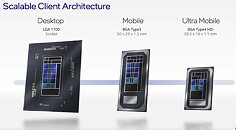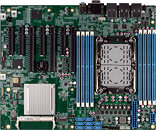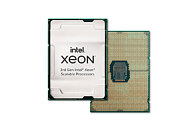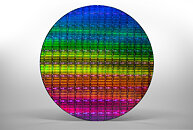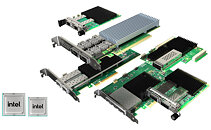Loongson Unveils 64-Core LS3C6000 Server CPUs to Rival Intel "Ice Lake-SP" Xeons
China's Loongson has introduced its latest server processor family, the LS3C6000 series, its most powerful domestically designed processor. These new chips use Loongson's fourth-generation microarchitecture and pack 16 64-bit superscalar LA664 cores on each die. With simultaneous multi-threading, the single-die "S" model handles 32 logical threads, while the dual-die "D" and quad-die "Q" versions support 64 and 128 threads, respectively. Operating between 2.0 GHz and 2.2 GHz, the family delivers peak double-precision FP64 performance of 844.8 GigaFLOPS for S units, 1.612 TeraFLOPS for D units, and 3.072 TeraFLOPS for Q units. Each core benefits from 64 KB of dedicated instruction cache and 64 KB of data cache, plus a 256 KB private L2 cache, while a shared 32 MB L3 cache serves all cores on a die.
Memory bandwidth is served by four 72-bit DDR4-3200 channels in the S version and eight channels in larger SKUs, and connectivity comes via 64 PCI Express lanes for S models and 128 lanes for D and Q models, alongside SPI, UART, I²C and GPIO ports. Security is addressed through an integrated SE module with a secondary LA264 core that accelerates SM2, SM3, and SM4 cryptographic functions. Loongson relies on its proprietary Coherent Link interconnect, which uses PCI Express-style links and board-level direct paths to scale up to 256 logical cores in multi-socket systems. Power consumption ranges from 100 to 120 W for S parts, 180 to 200 W for D parts, and 250 to 300 W for Q parts. Loongson suggests that its 16-core S model competes with Intel's (now old) third-generation Xeon Scalable processors, while its 64-core Q model is roughly comparable to the Xeon Platinum 8380 with 40 cores and 80 threads.
Memory bandwidth is served by four 72-bit DDR4-3200 channels in the S version and eight channels in larger SKUs, and connectivity comes via 64 PCI Express lanes for S models and 128 lanes for D and Q models, alongside SPI, UART, I²C and GPIO ports. Security is addressed through an integrated SE module with a secondary LA264 core that accelerates SM2, SM3, and SM4 cryptographic functions. Loongson relies on its proprietary Coherent Link interconnect, which uses PCI Express-style links and board-level direct paths to scale up to 256 logical cores in multi-socket systems. Power consumption ranges from 100 to 120 W for S parts, 180 to 200 W for D parts, and 250 to 300 W for Q parts. Loongson suggests that its 16-core S model competes with Intel's (now old) third-generation Xeon Scalable processors, while its 64-core Q model is roughly comparable to the Xeon Platinum 8380 with 40 cores and 80 threads.































